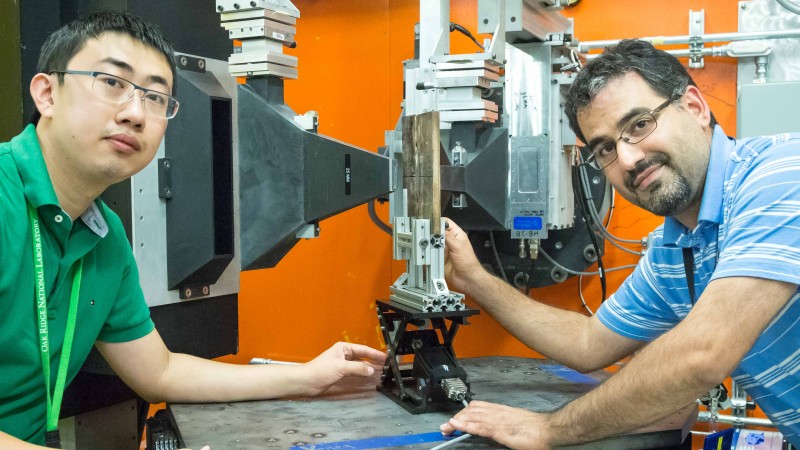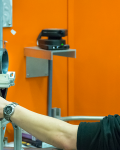Ensuring the stable structure of any vehicle requires strong welds. Researchers from many different fields have studied ways to avoid weaknesses in vehicle welds; however, for the military, ensuring strength in armored vehicles is especially critical. Demetrios Tzelepis from the U.S. Army’s Tank Automotive Research, Development, and Engineering Center (TARDEC) in Warren, Michigan, is collaborating with Xinghua Yu and Principal Investigator Zhili Feng, both from Oak Ridge National Laboratory’s Materials Science and Technology Division, to test a newly developed weld wire for armored vehicles using neutron diffraction at the HB-2B beam line of the ORNL High Flux Isotope Reactor.
One persistent issue in welding high-strength steels is hydrogen induced cracking, or HIC, which is the process where the steel becomes brittle due to the introduction of hydrogen during the welding process. Three essential conditions must co-exist for HIC to occur: the presence/absorption of hydrogen from the welding process or the environment, sensitive hardened microstructure, and high tensile residual stresses. If any one of these conditions are eliminated the occurrence of HIC is reduced. One common method employed to reduce the occurrence of HIC is to preheat the weld prior to welding. This drives off any hydrogen, but also adds time and cost to the welding process. For military applications, Tzelepis said the ideal condition is to weld without preheating, thus a different approach is need to mitigate hydrogen induced cracking.
The team has taken an entirely different approach to the mitigation of HIC. The team has developed a weld wire chemistry that does not require preheating. The weld wire changes the stress state, in situ, at the weld; it reduces the amount of tensile stress and in most cases changes the stress state from tensile to compression.
“Here at HFIR we’re measuring residual stresses in our test welds and comparing with industrial or commonly available welds,” said Tzelepis. “If all goes well, this new weld wire can be used in all major combat vehicles.”
The team is using HB-2B to make quantitative residual stress measurements of the filler wires. These neutron measurements complement initial fracture analysis measurements conducted previously at the Army Research Laboratory.
HFIR is a DOE Office of Science User Facility. UT-Battelle manages ORNL for the DOE's Office of Science. The Office of Science is the single largest supporter of basic research in the physical sciences in the United States, and is working to address some of the most pressing challenges of our time. For more information, please visit http://science.energy.gov/.





